Jeremiah Goodman - Gifted Gallery
- Lilium

- Mar 3, 2022
- 5 min read

Jeremiah Goodman, born October 22, 1922, was an illustrator who signed his work with his first name only. Goodman used his unique painting style to create the essence of a building's interior. His painting interprets the plans of both architects and interior designers. He painted original portraits of spaces for both commercial and private clients. For almost twenty years he created the covers for Interior Design magazine, and also books on interiors and for murals.
Goodman was born in Niagara Falls, New York, the youngest of five children of Anna Cohen and Louis Goodman. His parents were Jewish emigrants from Russia and Poland. While convalescing from a right-hand injury at the age of four, he was given a set of crayons and adapted by becoming left-handed, and developed an interest in art.

In 1930 the family moved to Buffalo. During the Great Depression there was little work for his father, but Jeremiah was able to attend Lafayette High School, studying art with Elizabeth Weiffenbach and Ethel Davis, with the intention of becoming a set designer for Hollywood or Broadway. He graduated in 1939.
During WWII, he returned to Buffalo, trained as a machinist and worked for Curtiss-Wright in their experimental division. In 1940, at the age of 18, he moved to New York City to attend the Franklin School of Professional Art on a full scholarship. After graduating, he studied part-time at Parsons School of Design, then known as the New York School of Fine and Applied Arts, enrolling in interior decoration and commercial illustration courses. His first job in New York was for window display designers Sue Williams and Dana Cole, while attending school.
In 1945 he moved to Los Angeles and was hired by stage and screen interiors set designer, Joseph B. Platt (designer on films Gone with the Wind, Rebecca, and Portrait of Jennie), as an illustrator/sketch artist. After an offer to decorate the set of a Hollywood jungle film, he was frustrated, realising that his talents were not being fully utilised and returned to New York City.

In 1948, Jeremiah met British actor John Gielgud, and travelled with him to Europe for the first time in 1949. Gielgud encouraged him to paint room portraits, a pursuit which would continue throughout his life. At the same time, another painter, William Bankier Henderson, aide-de-camp to Sir Archibald Wavell, the Viceroy of India, introduced him to a stratum of people who allowed him to paint interpretations of rooms in their residences.
Often the rooms were sketched on the spot. If time and space permitted they would be painted there as well. Otherwise, he would return to his studio to execute the final, working from photographs and from memory. Aside from commissions from Gielgud, over the decades Jeremiah painted the European interior spaces of Cecil Beaton, designer David Nightingale Hicks, Picasso, Baron Philippe de Rothschild, Carlos de Beistegui, jewellery designer Elsa Peretti and fashion designer Elsa Schiaparelli. He also painted interpretations of the Nymphenburg Palace, Bavaria.
Introductions to numerous people in the U.S. theatre and film worlds opened doors for Jeremiah. Many commissioned him to paint portraits of their residences, notably, stage, screen and TV producer Daniel Melnick, Greta Garbo and Mary Martin, costume designers Edith Head, Gilbert Adrian and Tony Duquette, fashion designers Carolina Herrera, Bill Blass and James Galanos and Vogue Editor Diana Vreeland.
In 1949, Jeremiah was given entry to the hidden Parisian maisons of illustrious fashion designer Jeanne Lanvin and her daughter, Marguerite Marie-Blanche. Their home decor department, Lanvin-Décoration, was run by Armand-Albert Rateau who, along with Lanvin, designed the interior of the Daunou Theatre in 1921. Lanvin’s motto, "Art and fashion are one" is evident in Jeremiah's creative endeavours as well. In the same year, Jeremiah began illustrating the covers of Interior Design magazine, an assignment that continued until late 1964. In the same period, he created illustrations for Harper's Bazaar, House & Garden and Vogue magazines.
From 1952, for over thirty years, he worked for Lord & Taylor department stores under the Art Direction of Harry Rodman, first designing windows, painting murals and eventually illustrating advertisements and catalogues.
In 1957 Jeremiah purchased a carriage house on Long Island, NY, at 14 Meadows Way, East Hampton, built by architect Joseph Greenleaf Thorp for the J. Harper Poor family, circa 1917. Constructed around a courtyard, where Goodman installed an in-ground swimming pool; banks of French doors and windows overlook gardens planned by Alden Hopkins, a landscape architect for Colonial Williamsburg. The cast-iron circular staircase, stucco fireplace and slate flooring, though designed by Goodman, felt like a part of the original building. Art, collectibles, antiques and contemporary furniture were arranged to offer intimate spaces. He attributed Frances Hodgson Burnett's novel, The Secret Garden as an inspiration for the layout of his East Hampton home.
A studio on the second floor gave him privacy to work if there were guests. Playwright Edward Albee, sculptor Louise Nevelson, actresses Mary Martin and Hermione Gingold were visitors, as well as designer friends Marjorie Shushan, Mark Epstein, Geoffrey Ross, John Dranfield and Harry Heissmann.
His New York City apartment and studio overlooked the East River and Queensborough bridge. Occupying a corner unit on a lofty floor of a 1970s vintage skyscraper, with two walls of windows. It was featured in Architectural Digest twice. Click the image link below and you can read an article by Heather Clawson for Habitually Chic from 2010, where she visited Jeremiahs apartment and took a multitude of photographs.
In 1964 Goodman was commissioned to illustrate the book My Favourite Things: A Personal Guide to Decorating and Entertaining by Dorothy Rodgers, wife of Richard Rodgers.
As the relationship with Lord & Taylor developed, he created fashion illustrations and advertising for magazines and newspapers, most notably, The New York Times. His unique brushwork and spatter techniques, perspectively accurate yet spontaneous, influenced architectural illustrators for decades. His work continued to appear in the editorial pages of the magazines Harpers’ Bazar, House and Garden, and Interior Design, whose covers he illustrated every month for 15 years, for which he received, in 1987, the prestigious Hall of Fame Award in recognition for his contribution in the field of interior design.
Jeremiah Goodman died on 7 September 2017, aged 94, at his apartment in Manhattan.
In the same year, the Los Angeles Design Fournir Gallery held a 70 year retrospective of Goodman's work, curated by Dean Rhys Morgan. Goodman is now best remembered for his interior portraits. Scott M. Ageloff wrote in his book Inspired Impressions: Interior Paintings by Jeremiah Goodman that:
"In the realm of interior paintings, the work of Jeremiah Goodman stands out as among the most beautiful and influential. ---one of the greatest masters of interior illustration of our time.”
Reading Recommendations & Content Considerations
Jeremiah Jeremiah















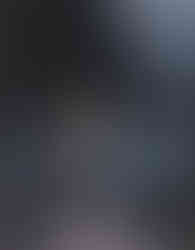











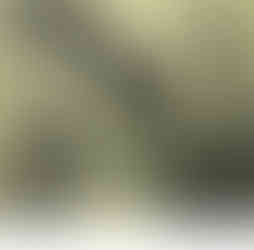






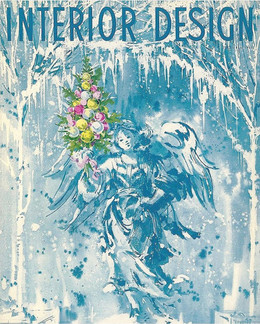









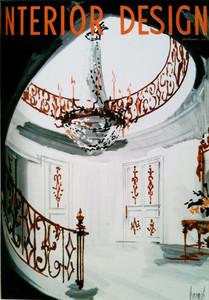
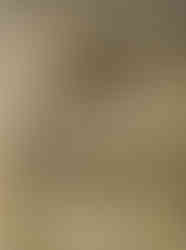

















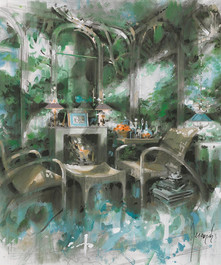













































































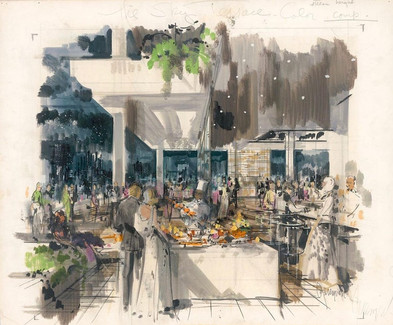



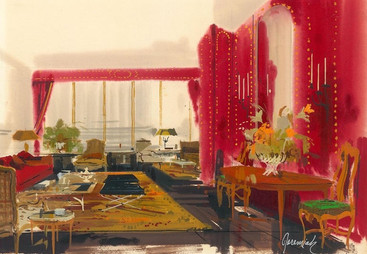













































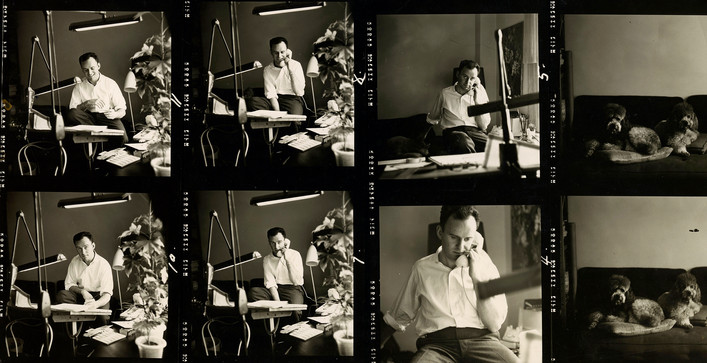
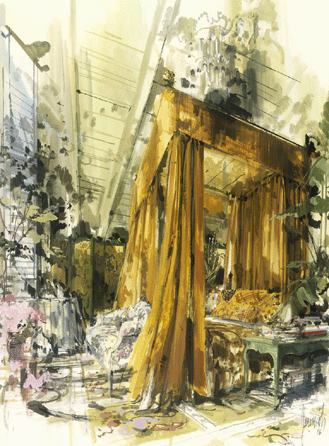




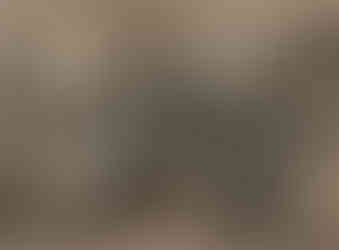


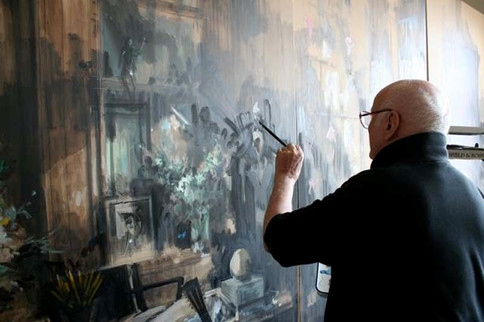





































Comments